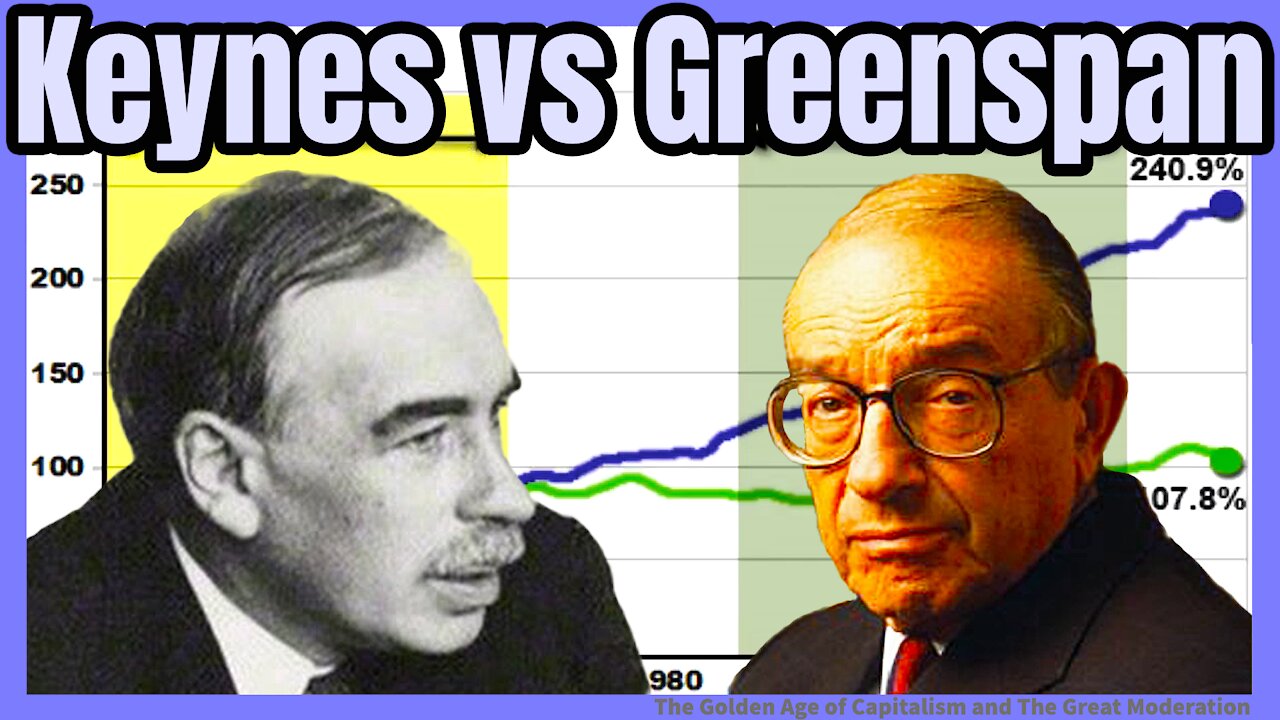Premium Only Content

The Myth of the Great Moderation: Keynes vs Greenspan | Economics 🏘️📈
The Great Moderation is a period starting from the mid-1980s until 2007 characterized by the reduction in the volatility of business cycle fluctuations in developed nations starting compared with the decades before. It is believed to be caused by institutional and structural changes, particularly in central bank policies, in the second half of the twentieth century.
During the Great Moderation, real wages and consumer prices stopped increasing and remained stable, while interest rates reversed their upward trend and started to fall. The period also saw a large increase in household debt and economic polarization, as the wealth of the rich grew substantially, while the poor and middle class went deep into debt.
And then in 2008 the economy crashed and the global finanacial sector imploded. This video shows us why.
Chapters:
00:00 Financial crisis
00:16 Historical GDP growth
00:32 Golden Age of Capitalism vs The Great Moderation
00:56 Real hourly compensation vs net productivity
01:11 Wages vs Corporate Profits
01:23 Wages vs Household Debt
01:45 US Trade Deficit / Surplus
01:57 Sectoral (financial) balances
02:23 Finance vs Manufacturing: % of domestic profits
02:35 Household Debt vs Credit Availability
02:57 Income Inequality in the US, 1910 - 2010
03:15 Income Distribution in the US; bottom 90% vs top .01%
04:56 Keynesian Economic policies and solutions
Data:
FRED | Federal Reserve Economic Data | St Louis Fed
https://fred.stlouisfed.org/
#MMT #economics #keynes #inquality #greenspan #economy
what was the great moderation, macro economics, alan greenspan, john maynard keynes, keynes vs greenspan, economic inequality, keynesian economincs, trickle down economics, monetarism, MMT, neoliberalism, deficits, economics, what is modern monetary theory, what is modern money theory, loans create deposits, federal reserve bank, the fed, fiat money, money creation, great moderation explained
-
 3:22
3:22
Data Ninja
3 years agoTop Coffee Export Producers | 1960 - 2021 ☕📊
1083 -
 0:33
0:33
GODSFAVOR
3 years agoGreat faith
128 -
 1:01:52
1:01:52
In The Litter Box w/ Jewels & Catturd
23 hours agoBest Presidents' Day Ever! | In the Litter Box w/ Jewels & Catturd – Ep. 743 – 2/17/2025
70.1K49 -
 1:29:15
1:29:15
Simply Bitcoin
6 hours ago $6.51 earnedThey JUST Triggered A Global Gold Rush: $1M Bitcoin is coming! | EP 1184
68K23 -
 1:50:47
1:50:47
The Quartering
6 hours agoElon Musk's 13th Baby, Trump Attends Daytona 500, and Ramaswamy Enters the Ohio Governor's Race
91.2K38 -
 1:28:04
1:28:04
Russell Brand
6 hours agoBREAKING: UK Troops To Ukraine | Zelensky Wants “Army Of Europe” | JD Vance SLAMS EU Tyranny – SF538
164K51 -
 1:46:20
1:46:20
Benny Johnson
7 hours agoPANIC: Feds FLEE DC After Mass PURGE, Fired USAID Activists EXPOSED | Trump DOMINATES Daytona 500
153K157 -
 1:58:43
1:58:43
The Charlie Kirk Show
6 hours agoCBS Steps In It + Hockey Brawl + Judicial Standoff | Yoo, Schlapp, BigTree | 2.17.2025
147K45 -
 1:01:26
1:01:26
The Dan Bongino Show
9 hours agoTrump Is Cancelling DEI And Cancel Culture (Ep. 2424) - 02/17/2025
908K1.76K -
 1:06:12
1:06:12
Timcast
8 hours agoDemocrat Swamp IMPLODES, CBS Runs DAMAGE Control For Democrats, Gets ROASTED By Elon | Timcast LIVE
177K187